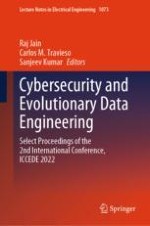This book comprises the select proceedings of the 2nd International Conference on Cybersecurity and Evolutionary Data Engineering (ICCEDE 2022). The contents highlight cybersecurity and digital forensics, evolutionary data engineering, and data management for secure contemporary applications. It includes papers on data models, semantics, query language; AI-driven industrial automation, ERP, CRM data security; authentication and access control; cyberspace structure and models; and drone large data filtration, cleansing, and security, among others. This book is of immense interest to researchers in academia and industry working in the fields of electronics and data engineering.
